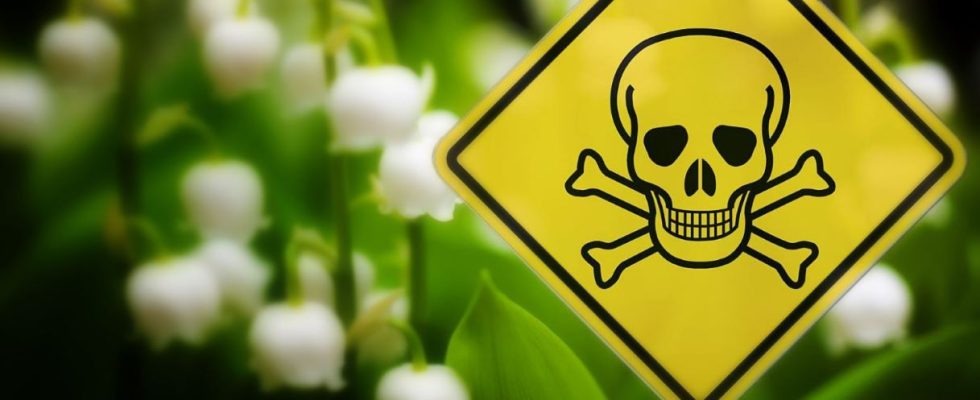
General presentation of lily of the valley
Lily of the valley is a rhizomatous herbaceous plant which, in the wild, grows in the undergrowth, but it is entirely possible to cultivate it in your garden in a shaded area. If the weather is on your side, it will be ripe by May 1st, ready to be offered as tradition dictates.
What characterizes a sprig of lily of the valley are its two lanceolate leaves, that is to say erect spearheads, which emerge directly from the ground and in the center of which appears a frail stem bearing delicate waxy and very fragrant white bells. gathered in lateral clusters.
Towards the end of June, these flowers will give way to small, very toxic red berries. Lily of the valley is a perennial plant and as long as it is well established, it is very easy to grow. On the other hand, its flowering for the big day is not guaranteed.
Why is lily of the valley toxic?
There is not a single part of lily of the valley that is not poisonous, even the water in his vase is ! If this is so, it is because as cute and fragrant as this plant is, it contains different cardiotoxic glycosides such as convallatoxin, convallarin, convalloside, etc.
These substances slow heart rate and increase blood pressure. Moreover, for a long time, lily of the valley was used as a medicinal plant to fight against hypertension, but the dosage of the molecule being too complicated, this use was put an end to.
It should be noted that you fear nothing when touching lily of the valley. It is only toxic by ingestionwhich means that, according to the Poison Control Center, the only cases reported concern young children, due to their habit of putting everything in their mouth, and domestic animals, who may be attracted by the white bells or, more late, by the red berries.
Lily of the valley poisoning
If part of the plant is ingested, it may cause serious harm. nausea, vomiting, abdominal pain, diarrhea, headache or dizziness in less severe cases. However, the consequences can be more serious. Indeed, cardiovascular symptoms can appear such as cardiac arrhythmias. These effects can be seen in both humans and domestic animals.
However, it is rare to reach such extremes, because as soon as it is ingested, this plant induces vomiting, which has the advantage of limiting the absorption of toxic substances.
What to do if swallowed?
So if you are offered lily of the valley or if you have it in your garden, caution is advised: keep it out of reach of young children and pets. But no one is ever safe from an accident, unfortunately! If a child licks a lily of the valley leaf or ingests a bell, don’t panic. He will probably start by vomiting and thus eliminate some of the substances. Then you just have to monitor it at home.
On the other hand, if you notice more serious symptoms, do not wait to contact the Poisons Center. Try to be as precise as possible about the quantity ingested. If necessary, go directly to the emergency room. Even without serious symptoms and if you need to be reassured, do not hesitate to call a Poison Control center. They will advise you on the correct behavior to follow.
Confusion between lily of the valley and wild garlic
It also happens that lily of the valley poisoning is linked to an error. Indeed, its leaves closely resemble those of wild garlic and it can then be consumed by mistake.
So, if after harvesting wild garlic from the undergrowth and consuming it, you suffer from symptoms of poisoning, it is possible that there was confusion at the time of picking. It is therefore important to know how to recognize wild garlic and to be vigilant when harvesting it from the wild, because these two plants grow in the same places. Trust your sense of smell to avoid making a mistake.

